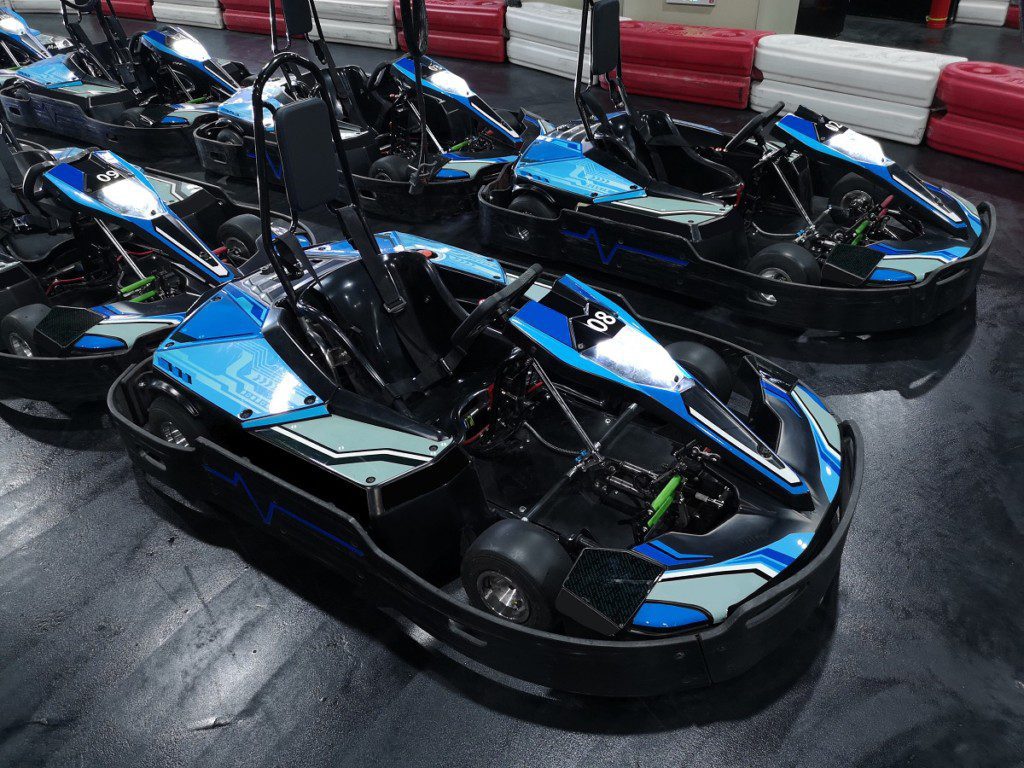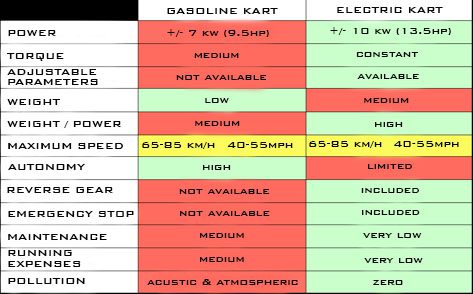GASOLINE KARTS VS ELECTRIC KARTS
Karting was born in the 1950s when the first go-kart was built with a mower engine. Back then, the existing technology was not what we know today.
Today we know that the future will be economic, social and ecological.
At Ferkart we help our clients to adopt the business model of the future, CSR (Corporate Social Responsibility). Facilitating the implementation of electric karts in their projects.
By comparing an electric kart with gasoline, you can identify several aspects:
ECONOMIC – Your business will be substantially more profitable if you use electricity instead of fuel to boost your business.
SOCIAL – Your business will serve indirectly to show that electric mobility is now possible as well as all its advantages and in all its fields.
ECOLOGICAL – Your business will vastly reduce the impact it has on the environment, our planet and the small area of it in which we live.
All this will project a responsible image and improve your business reputation.
Main advantages of electric propulsion:
- CONSTANT PAR – In an electric the motor’s force does not depend on the revolutions. All force is available from 0 rpm, giving the whole unmatched acceleration.
- ENERGY EFFICIENCY – An electric motor takes advantage of around 95% of the energy it receives compared to 25% that combustion engines take advantage of. This makes it much less expensive to use, economically and energetically.
- MECHANICAL SIMPLICITY – An electric motor has only one moving part. So the risk of a breakdown is virtually zero and maintenance is almost completely eliminated. In addition, don’t be afraid of water; If necessary, the set could become water resistant, even submersible.
 (Gasoline Kart vs Electric Kart Specs)
(Gasoline Kart vs Electric Kart Specs)
Disadvantages of gasoline powered karts versus new electric kart technology:
- RECHARGE TIME – With few calculations you can see that it doesn’t really compensate for the cost of burning gasoline for “no breaks” performance. With an electric kart at full performance (without releasing the throttle pedal) we can expect 25 to 35 minutes of autonomy. And the recharge time will be about the same as the discharge (i.e. if you drive 5 minutes – recharges in 5 minutes). The most attractive is in maintenance and savings in the medium/long term.
- INITIAL COST – It must be considered an investment. The acquisition of electric vehicles, such as any efficient technology (energy-efficient bulbs, LEDs, solar panels, ) is higher than its traditional namesake, but it always compensates. The current technological trend shows this.
COMPARATIVE CHART OF MAINTENANCE EXPENSES:


 (Gasoline Kart vs Electric Kart Specs)
(Gasoline Kart vs Electric Kart Specs)
